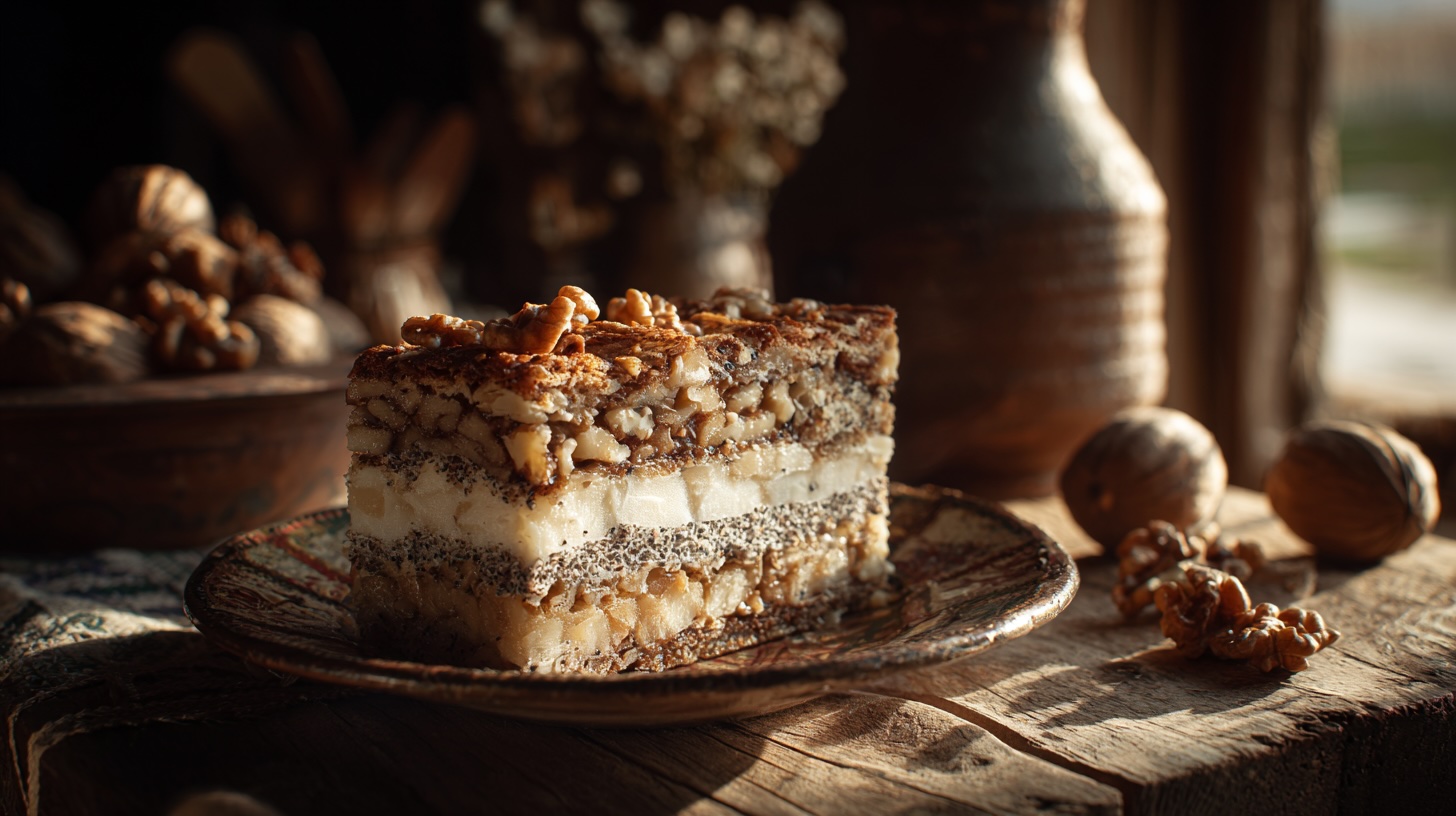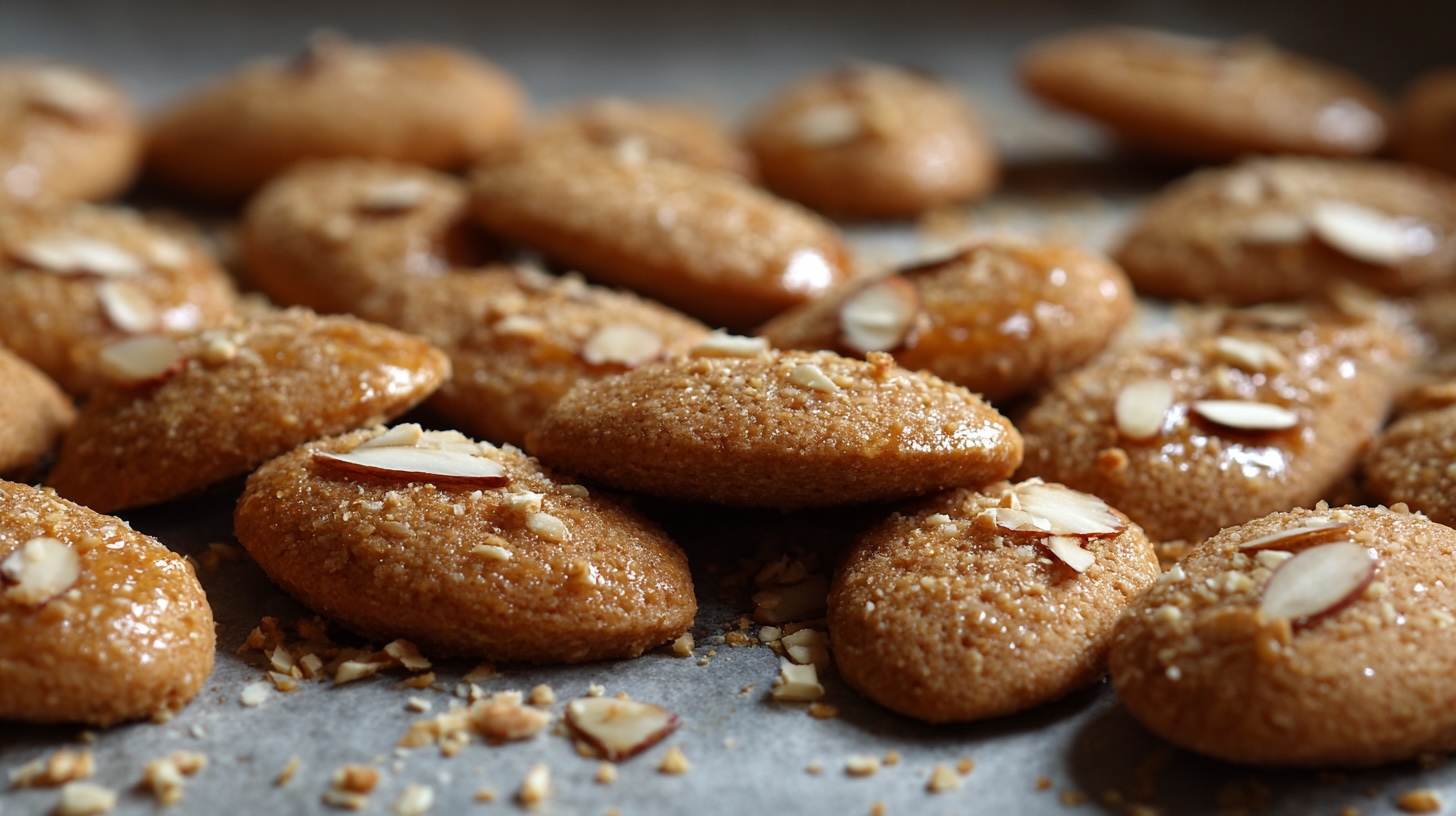Kama Cake: A Taste of Estonia in Every Crumb
Let’s talk about kama cake – Estonia’s quiet culinary flex, the humble dessert you didn’t know you needed in your life. Picture a cake that whispers instead of shouts, a sponge that’s less glitz and more grit. If you’ve never heard of kama, don’t worry. It’s one of those ingredients that rarely makes the leap out of its homeland, which is a shame really, because it’s kind of brilliant.
So, what is kama? It’s a traditional Estonian (and a bit Finnish and Latvian too, but let’s not get into Baltic bickering) flour made from a mix of roasted barley, rye, oat, and peas. Yes, peas. All roasted and ground into this nutty, slightly sweet powder that smells like earthy comfort and has been a staple since the days when Vikings were just your average neighbours with horned helmets and boundary issues. Back then, kama was a survival food – nutritious, shelf-stable, and didn’t require cooking. Fast-forward a few hundred years and it’s evolved into a nostalgic ingredient with major hipster energy.
The kama cake is a modern riff on the age-old flour. There isn’t one strict version of it, which is part of the charm. In Estonia, you’ll find everything from no-bake cheesecakes using kama as a base, to fluffy layered numbers with berries and cream, to dense loaves that tread the line between bread and dessert. Kama is like the Scandinavian cousin of graham crackers, oat biscuits, and malted milk powder – all rolled into one, with an accent and a woolly jumper.
What makes it special? First, that roasted flavour. It’s toasty, slightly bitter in a grown-up coffee kind of way, with hints of sweetness that flirt with whatever you pair it with. Then there’s the texture – kama gives cake a delicate crumble and a grounding richness that makes even a slice feel like a hug from someone who listens to folk music and owns a sourdough starter. It’s the sort of thing that tastes like a place. And that place probably has pine trees, long winters, and excellent knitwear.
To drink? Coffee, obviously – preferably black, no sugar, in a slightly chipped mug. Or a chilled glass of kefir, if you want to go full northern rustic. If you’re feeling festive, mulled wine or cloudberry liqueur wouldn’t go amiss either.
Food-wise, kama cake plays well with tangy fruits – think blackcurrants, sea buckthorn, lingonberries. A dollop of whipped cream or a scoop of sour cream on the side never hurts. If you’re the sort to garnish your dessert with herbs (and of course you are), a few thyme leaves or a sprinkle of rosemary sugar can take it into vaguely poetic territory.
Is it healthy? Depends who you ask. Kama is wholegrain, full of fibre, and naturally sweet-ish without added sugar. But we are talking about cake, so let’s not get carried away. It’s the kind of thing you can almost convince yourself is good for you if you squint and eat it with yoghurt.
Where can you find it? Well, Estonia, for starters. Cafes in Tallinn will serve up some variation of kama cake, especially in the more design-forward, moody-lighting sort of places. You might spot it in a Nordic-inspired bakery in Berlin or Copenhagen. Online specialty shops sometimes stock kama flour, so if you fancy giving it a go yourself, it’s not completely out of reach.
Right then, here’s a kama cake recipe that’s not trying too hard but will still make you feel like the sort of person who forages for berries and writes postcards.
Kama cake recipe
You’ll need:
- 150g kama flour (or a DIY version: equal parts roasted oat, rye, barley flours, and a bit of roasted pea flour if you’re feeling authentic)
- 100g plain flour
- 2 tsp baking powder
- A pinch of salt
- 150g brown sugar
- 2 eggs
- 200ml kefir or buttermilk
- 100ml vegetable oil
- 1 tsp vanilla extract
- 200g cream cheese
- 100ml double cream
- 2 tbsp icing sugar
- Fresh berries: raspberries, blueberries, currants
Mix the dry stuff in one bowl, the wet in another (excluding the cream cheese, double cream, and icing sugar). Combine, stir gently, don’t overdo it. Pour into a greased round cake tin, bake at 180°C for 30-35 minutes or until a skewer comes out clean and the top is golden and slightly cracked.
Let it cool completely.
Meanwhile, whip the cream cheese, double cream and icing sugar together until smooth and spreadable. Frost the top of the cake generously. Decorate with a tumble of fresh berries, as if you just came back from the forest with a basket and good intentions.
Serve with yoghurt or more cream on the side if you’re feeling indulgent. Preferably while wearing wool socks and listening to the wind through pine trees, even if it’s just a soundscape on YouTube.
And there you have it – kama cake. Quietly confident, a little obscure, and entirely worthy of your next tea break.



